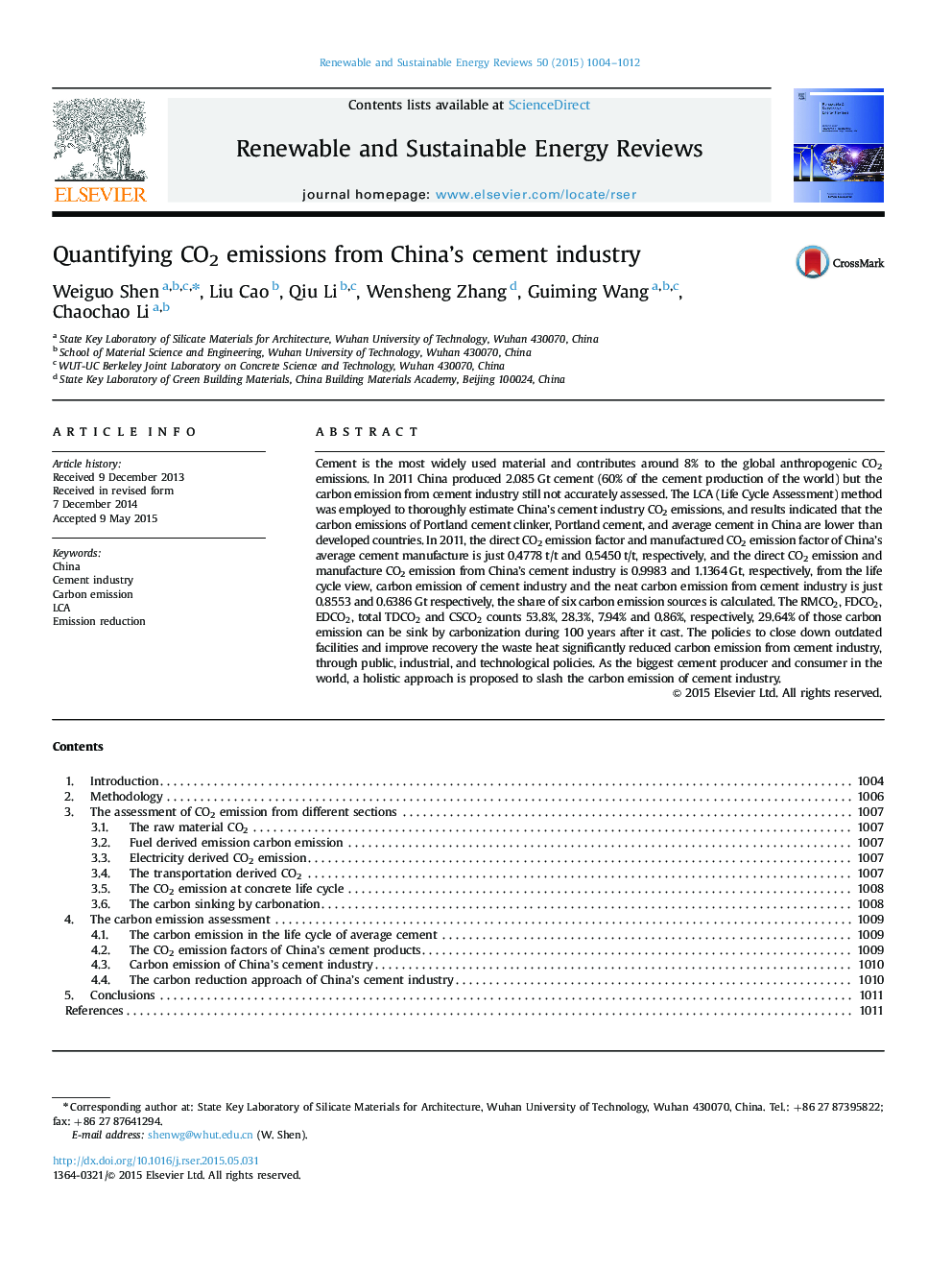| Article ID | Journal | Published Year | Pages | File Type |
|---|---|---|---|---|
| 8116273 | Renewable and Sustainable Energy Reviews | 2015 | 9 Pages |
Abstract
Cement is the most widely used material and contributes around 8% to the global anthropogenic CO2 emissions. In 2011 China produced 2.085Â Gt cement (60% of the cement production of the world) but the carbon emission from cement industry still not accurately assessed. The LCA (Life Cycle Assessment) method was employed to thoroughly estimate China's cement industry CO2 emissions, and results indicated that the carbon emissions of Portland cement clinker, Portland cement, and average cement in China are lower than developed countries. In 2011, the direct CO2 emission factor and manufactured CO2 emission factor of China's average cement manufacture is just 0.4778Â t/t and 0.5450Â t/t, respectively, and the direct CO2 emission and manufacture CO2 emission from China's cement industry is 0.9983 and 1.1364Â Gt, respectively, from the life cycle view, carbon emission of cement industry and the neat carbon emission from cement industry is just 0.8553 and 0.6386Â Gt respectively, the share of six carbon emission sources is calculated. The RMCO2, FDCO2, EDCO2, total TDCO2 and CSCO2 counts 53.8%, 28.3%, 7.94% and 0.86%, respectively, 29.64% of those carbon emission can be sink by carbonization during 100 years after it cast. The policies to close down outdated facilities and improve recovery the waste heat significantly reduced carbon emission from cement industry, through public, industrial, and technological policies. As the biggest cement producer and consumer in the world, a holistic approach is proposed to slash the carbon emission of cement industry.
Related Topics
Physical Sciences and Engineering
Energy
Renewable Energy, Sustainability and the Environment
Authors
Weiguo Shen, Liu Cao, Qiu Li, Wensheng Zhang, Guiming Wang, Chaochao Li,
